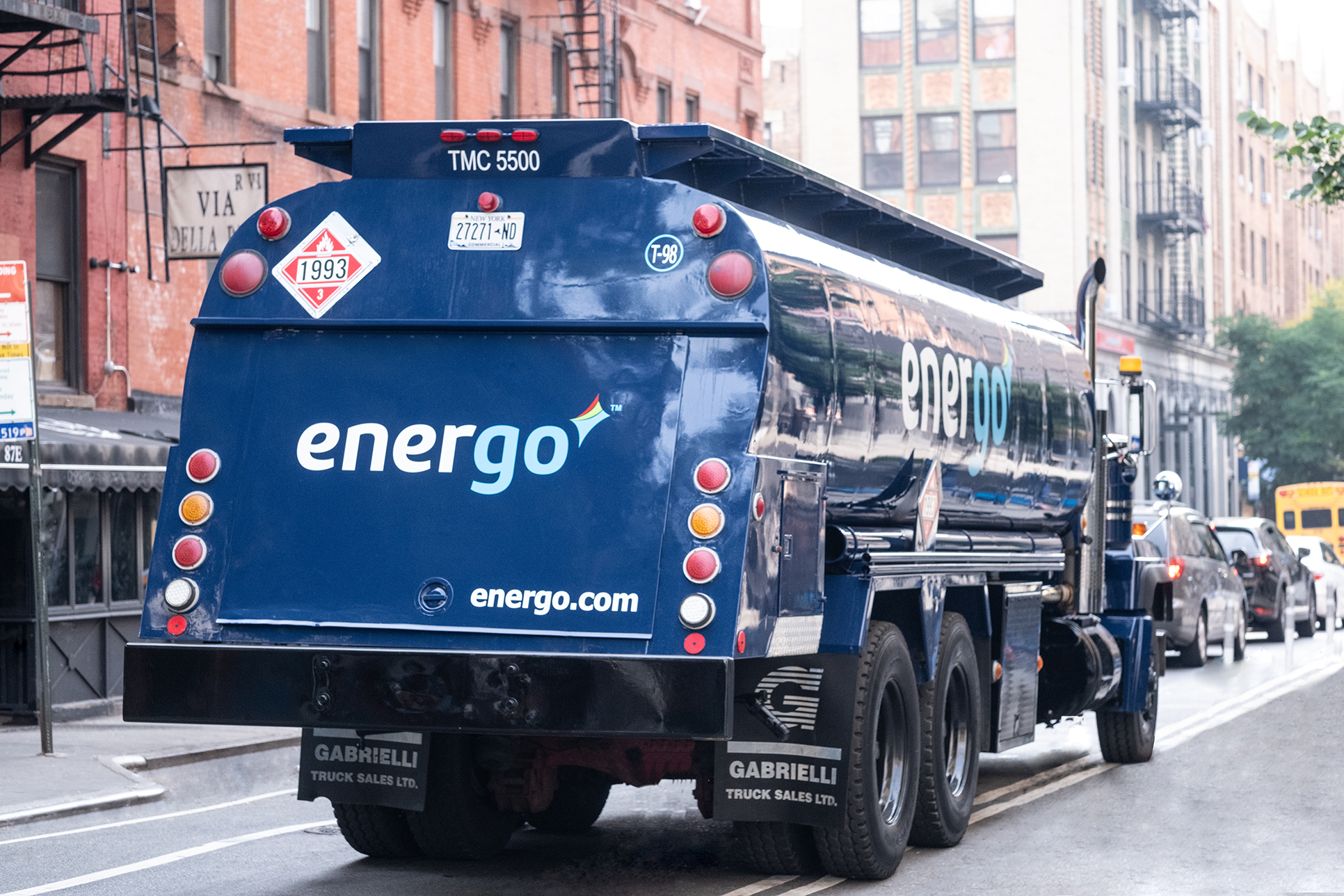Fill Your Tank Early (and Keep It Fuel-Rich)
Don’t wait until the first deep freeze to refill – topping off your oil tank before winter has multiple benefits. First, you’ll ensure you have ample fuel on hand for the first cold snap. Additionally, a fuller tank leaves less empty air space, which reduces condensation and sludge formation inside the tank. Sludge – a mix of sediment, rust, and heavy fuel particles – tends to develop more when a tank is nearly empty, and it can clog your fuel lines and burner. By keeping more oil in your tank, you lessen the chance of that sludge being drawn into your system and causing a shutdown. In short, schedule a fill-up in early autumn. Not only does this guarantee you’re ready for the first cold nights, but it might also save you money – heating oil prices often rise as demand peaks mid-winter, so an early fill can lock in a lower rate before the seasonal surge. If possible, continue to refill before the tank gets extremely low; it’s a classic “penny-wise, pound-foolish” mistake to let your oil level dwindle to near-empty to try to time prices, as this greatly increases sludge risks and potential no-heat emergencies.
Inspect Your Oil Tank and Lines
Before winter, give your heating oil tank a thorough check-up. Walk around the tank (whether it’s in your basement, garage, or outdoors) and look for any signs of trouble. Key things to check: rust or wet spots on the tank’s surface, which could indicate corrosion or pinhole leaks; oil stains or drips around the filter, valves, or on the floor; and the condition of the tank’s support legs (for above-ground tanks, make sure legs are sturdy and not wobbling). Also inspect the fuel lines that run from the tank to your furnace – they should be covered in a protective sleeve (usually a plastic or rubber coating); if you see bare or cracked lines, have them updated to prevent leaks. For outdoor heating systems, ensure there are no overhanging gutters or icicles that could drop ice onto the tank, and that the tank’s vent pipe is not clogged (wasps and debris can sometimes nest in vent pipes during summer). It’s a good idea to test your tank’s whistle (the overfill alarm) by listening during a fill-up – if the whistle is silent, it could signal a vent blockage. If you’re not comfortable inspecting the tank yourself, consider having a professional do an annual tank inspection. New York State’s Department of Environmental Conservation specifically “reminds homeowners” to get tanks checked for leaks before the heating season – many oil companies offer a service visit for this. Catching and fixing any tank issues now, before the tank is full and the weather is frigid, will save you from bigger problems later.
Service Your Heating System (Burner/Boiler Tune-Up)
Getting your furnace or boiler tuned up goes hand-in-hand with tank readiness. A lot of fuel-related problems actually originate in the burner or filters, especially after a long offseason. Have a NYC HVAC technician clean and service your oil burner in the fall. Key tasks include replacing the oil filter and burner nozzle, cleaning out soot from the boiler/furnace, and checking that the combustion settings are efficient. A well-tuned burner will consume fuel more efficiently and reliably, giving you more heat per gallon of oil and reducing the chance of a mid-winter breakdown. This is also the time to check the furnace’s air intake and flue for any obstructions (like bird nests or corrosion in the chimney) and to test that your thermostats and safety controls are functioning properly. Regular maintenance can also catch issues like weak pumps or clogged flue pipes that, if left unaddressed, might cause your system to use more oil or shut down when working hardest. Some NYC homeowners opt for an annual service contract which covers this preventative maintenance – but even if you don’t have one, scheduling a one-time tune-up before winter is highly recommended. Not only does this optimize your fuel usage (saving you money), it also ensures safe operation (no fumes or risk of puffback) during the heating season.
Consider Fuel Additives for Extra Protection
When temperatures drop, heating oil can thicken (in very cold conditions, untreated oil might “gel” and impede flow, especially in outdoor or exposed tanks). Also, if your tank has had longstanding sludge, cold weather can dislodge it. To combat these issues, you might consider adding a heating oil treatment additive when filling your tank. Certain additives contain anti-gelling agents and sludge dispersants. For example, a sludge dispersant will break up sediment at the bottom of your tank into tiny particles that can safely pass through filters and burn off, instead of clogging your system. Some additives also include stabilizers and biocides to prevent microbial growth in fuel. If you’ve had issues with clogged filters in past winters or if you have an outdoor tank in a very cold area, ask your fuel supplier about winter additives. In many cases, suppliers deliver pre-treated winter blend oil (often a mix of heating oil and kerosene or with anti-gel additive) once the weather gets very cold. Make sure you’re receiving the appropriate winter blend for outdoor tanks. For extra peace of mind, you can pour a bottle of anti-gel treatment into the tank before a cold snap – this can keep the oil flowing freely even during a polar vortex. Just be sure to use additives specifically designed for home heating oil and follow product instructions. While not every home will need additives, they can be cheap insurance against fuel line freeze-ups, especially in January/February cold stretches.
Make Delivery Easy: Mark and Clear Access to Your Tank
Lastly, facilitate safe and timely oil deliveries all winter long by preparing the area around your fill pipe or tank. Clearly mark your fill pipe’s location if it’s not obvious – a small sign or flag can help oil delivery drivers find it quickly (especially important for new drivers or if snow has covered landmarks). In suburban areas, ensure your house number is visible so the driver doesn’t have trouble identifying your homes. Once snow arrives, it’s critical to keep a path shoveled to your fill pipe or outdoor tank. After each snowfall, or before a scheduled delivery, clear away snow from the driveway and the area around the fill. Not only does this make the delivery faster, it’s also a safety issue – slippery or blocked access can hinder the driver from refilling your tank. Similarly, remove any ice or snow from the tank itself (for outdoor tanks) – heavy snow or ice can damage tank fittings or, when it melts, water can seep into the tank’s vent. Trim any overgrown shrubs or branches in the fall that could obstruct the delivery hose route. Essentially, think ahead to give your oil company a clear, hassle-free path to do their job. A pro tip: if you’re going to be away or on vacation during winter, arrange for someone to maintain access and keep an eye on your fuel level, or notify your automatic delivery service so they can schedule appropriately. By making deliveries smoother, you reduce the chances of delays – meaning your tank stays filled and your home stays warm without interruption.
Following these five tips will go a long way toward winter-proofing your home’s oil tank and heating system. With a full tank, a sound container, a tuned-up burner, treated fuel, and easy delivery access, you’ll be set for a comfortable and worry-free winter at home.
Contact us to get more information and see how we can help!






Bronx Heating Oil: What to Expect This Winter (Delivery, Demand & Fuel Trends)
Heating oil in the Bronx continues to play a major role across supporting everything from one- to four-family homes to large multifamily buildings and mixed-use properties.
Residential Heating Oil in the NYC Area: No. 2 Heating Oil, Bioheat Fuel & Pricing Explained
For many homes across the NYC area — particularly in home heating oil in Brooklyn, Queens, the Bronx, Staten Island, Westchester, and Nassau — heating oil remains one of the most reliable and efficient ways to stay warm through the winter.